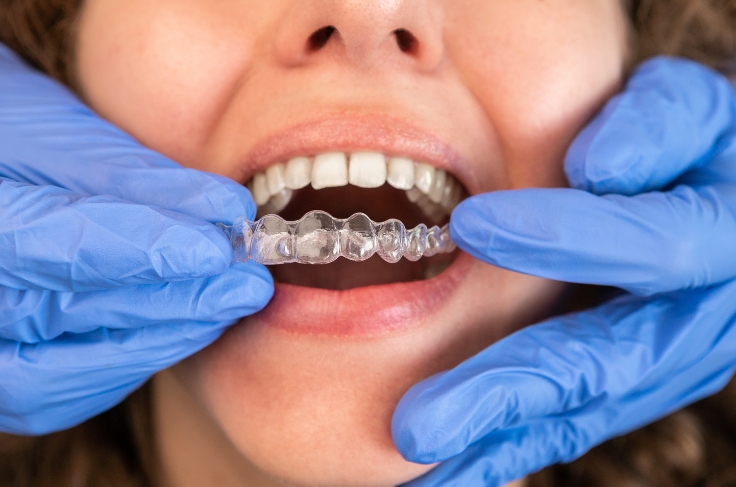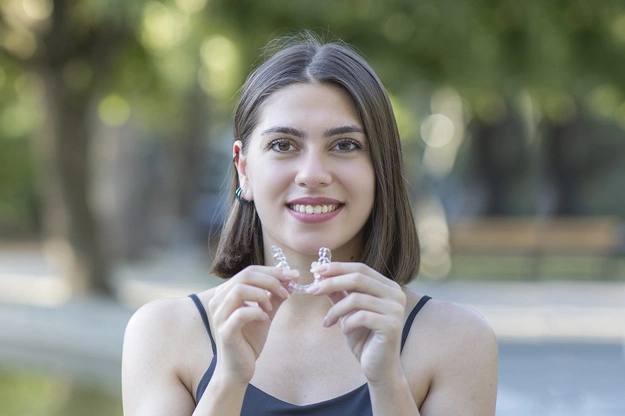Which Teeth Are Hardest to Move with Invisalign?


Studies show more than 20 million people worldwide have trusted Invisalign to achieve aligned teeth. And this number is only growing. Clear aligners are revolutionary in the dental care industry. The way these aligners straighten teeth without being evident as metal braces they are a blessing of modern dentistry. Consistent use of aligners moves teeth into the position that you envision as a perfect smile. They are the epitome of comfort, aesthetics, and convenience. But it’s a far-fetched concept that all teeth are equally responsive to aligners. While some move in no time, some refuse to budge at all.
If you’re advised to undergo an Invisalign treatment, it’s better to be aware of which teeth are most difficult to move with Invisalign. It helps you to stay true to your expectations. You can also use this information to better communicate with your orthodontist/dentist. The right treatment plan yields more predictable results and makes the treatment experience easy.
Let’s get to know which teeth move more slowly, why this happens, and how your dentist handles those obstacles.
Why Some Teeth Are Harder to Move
Several factors influence how a tooth will react to orthodontic force:
- Tooth root size and shape
- Bone density in the jaw
- Tooth rotation or tilt
- Crowding or space deficiency
- The position of the tooth in the dental arch
Teeth that are well-rooted or tilted in unusual directions take longer to move. They require consistent, controlled forces—something like Invisalign is formulated to provide, but within biological parameters.
The Hardest to Move Teeth Using Invisalign
The following are the teeth that generally take longer to adapt to Invisalign:
Molars
Molars are towards the posterior part of the mouth. They possess:
- Greater surface areas
- Multiple roots
- Deep bone anchorage
They are more difficult to move because of these factors. Molar alignment, particularly if rotation or vertical movement is involved, is more time-consuming. Distalizing them is also more challenging because there is not enough anchorage support from the front teeth.
Canines (Particularly Upper Canines)
Upper canines tend to erupt displaced or become stuck up in the gum. Translating them into position demands accurate pressure and frequently auxiliary instruments. Their extensive roots and position render them resistant to rapid movements.
Rotated Premolars
Rotating premolars entirely with clear aligners is difficult. Their oval nature and close spacing make rotation less certain. When a premolar exceeds 30 degrees of rotation, extra steps may be required, like attachments or elastics.
Intruding or Extruding Teeth
It is more difficult to move a tooth up into the gum (intrusion) or downwards (extrusion) with aligners compared to braces. Such vertical movements are less reliable and slower with Invisalign unless paired with attachments and staged planning.
How Long Do Harder Tooth Movements Take
Each patient is unique. Nevertheless, resistant teeth tend to add several months to the treatment process. A properly supervised Invisalign treatment can still yield wonderful results, but only if aligners are worn for the suggested 20 to 22 hours a day.
Skipping trays or not wearing them for a full day delays the process. Regular dental visits keep the movement monitored and adjust accordingly.
How Dentists Work with Challenging Tooth Movements
Dental professionals use the following to work with gradual or complicated movements:
- Attachments: Tiny, tooth-colored bumps aid in concentrated pressure
- Elastics: Little rubber bands shape the bite and jaw alignment
- Bite ramps: Open deep bites to create space for front teeth movement
- Refinements: Follow-up trays after the original plan to finalize shifts
These devices allow Invisalign to match or outperform braces on mild-to-moderate cases.
What You Can Do to Make Tooth Movement Possible
Patience is an essential part of the treatment outcome. To assist Invisalign in working better:
- Wear aligners for the recommended hours
- Attend all follow-up appointments with your dentist
- Clean teeth and aligners every day to prevent plaque
- Use chewies to seat aligners completely, particularly when changing trays
Consistency yields results. Even the most stubborn tooth can be moved with time using the right Invisalign treatment plan.
Curious about a nearly invisible way to straighten your smile? Discover “Why Invisalign is the Best Choice for Straightening Teeth“. If you’re considering teeth straightening, this guide is a must-read!
Invisalign tooth movement is founded on biology, force, and consistency. Some teeth, such as molars and canines, are slower to move due to their anatomy and location. But modern technology and treatment planning help you overcome these difficulties without worry.
If you’re already undergoing Invisalign treatment, don’t lose hope if progress seems slow. Each case progresses at its own pace. For support tailored to your condition, speak with a licensed dentist near Phoenix.




